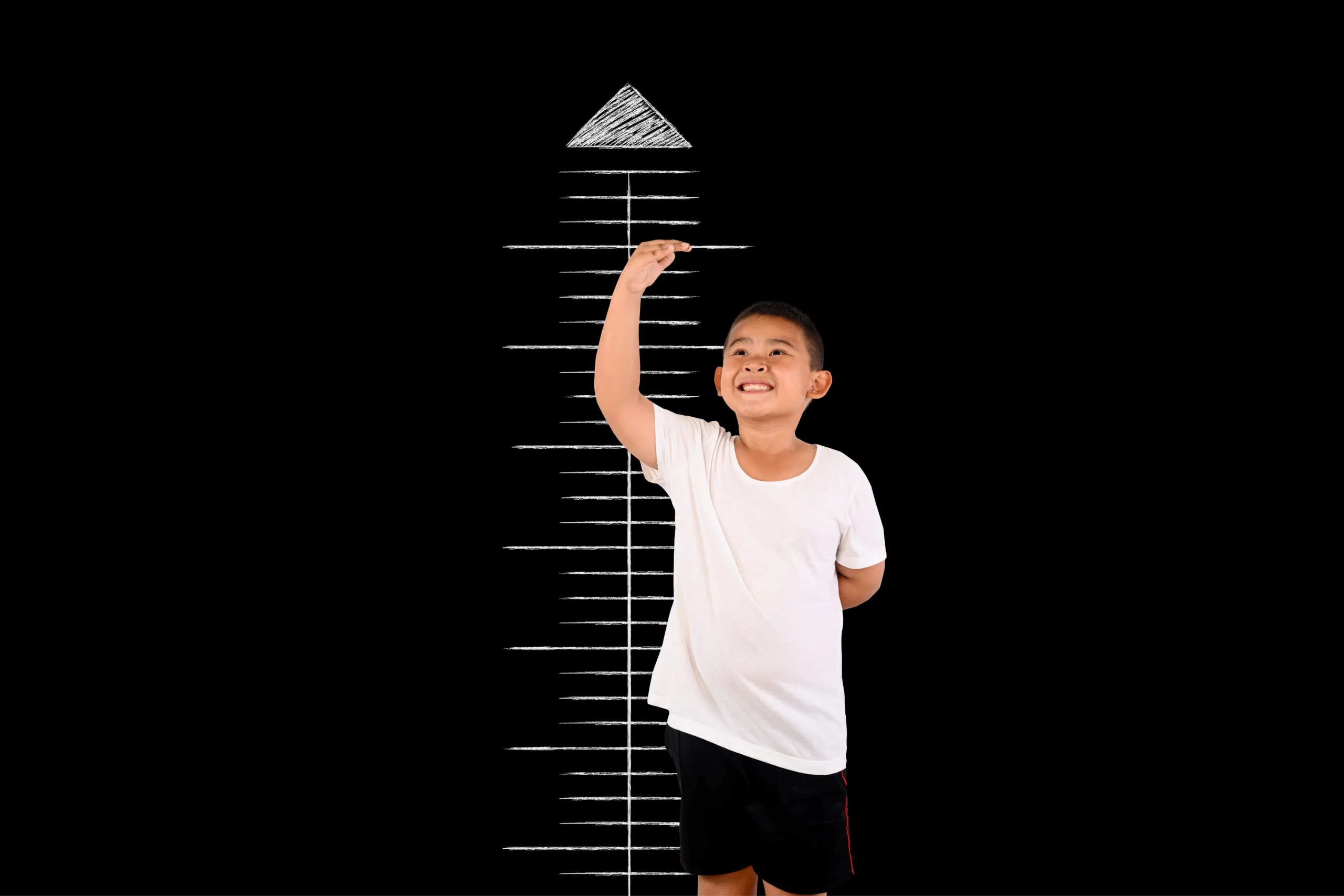The neat charts and the milestone posters that define how a child grows, gives us a checklist, but does it follow every child’s story? When we look at growth from a child’s perspective, we realise that growth is not math; it is not a problem that needs to be solved; and it is not a graph that can predict development.

This is how we expect our children to grow.

But in reality, a lot of growth looks like this; maybe even more bumpy for some, with grooves, and spikes, and even setbacks. This is what we call non-linear growth that means children don’t progress in steady, predictable steps. Instead, they move through spurts, pauses, regressions, and bursts of learning (Grimm, 2011).
Your child might suddenly learn to count but avoid talking in front of people, they might not be good at playing with people but might be great at puzzles. This growth isn’t random, it reflectswhat researchers call dynamic systems theory, which says that development is flexible, self-organizing, and influenced both by the body and environment (Perone, 2017).
The Power of a Strengths-Based Lens
Traditional models focus on delays, deficits, or what a child isn’t doing. But a strengths-based model flips the script: it asks what’s working, what’s unique, and how we can build on that.
Let’s say your child isn’t speaking yet, but they’re great at mimicking songs or gestures It could be a sign they’re using something called gestalt language processing. That means they learn language in chunks or “scripts” rather than word by word. So instead of saying “milk,” they might sing a line from a favorite cartoon that they’ve connected
with snack time. It’s a valid and meaningful way of learning to communicate, even if it looks different from typical speech development. These are strengths.
A strengths-based approach is especially helpful for neurodivergent children (like those with autism, ADHD, or sensory processing differences), whose development may not follow conventional patterns but is deeply valid. Studies show that affirming strengths improves engagement, reduces anxiety, and fosters resilience (Donaldson 2017). All of this is part of non-linear growth. The key is to notice what’s happening underneath. Maybe your child is taking in information before they’re ready to show it. Maybe they’re processing change, navigating stress, or just learning in a different sequence.
How Can Parents Support This Kind of Growth?
1. Track Patterns
Keep a journal with your child (printable) of what your child explores, repeats, or moves toward. Patterns tell us more than checkboxes.
2. Celebrate Their Way of Learning
If your child shows excitement through movement, sound, or silence, note them.
Share observations with teachers or caregivers so others can recognize their progress too. This approach allows for holistic development of a child and creates predictability and consistency throughout their day.
3. Use Visuals to Explain Growth
Tools like growth spirals or our child-friendly visuals can make this idea easy to understand. Children might also feel left behind and discouraged, sometimes maybe even frustrated. Letting your child know that growth is never a straight line, will build their confidence and allow them to move past setbacks.
4. Focus on Strengths During Tough Phases
When a child hits a plateau or regresses, identify what is going well. This helps them feel seen and supported; and reminds you both that growth is still happening. Setting new challenges for your child can also facilitate growth. And through all of this, it is important to see the growth in strengths and positively reinforce your child and yourself.
5. Look at setbacks differently
The brain needs rest, recovery, and re-organization after big bursts of development. What looks like stagnancy, is probably the child taking a break.
Every child grows at their own pace, and in their own way. When we let go of the idea that growth should be linear, we make room for something better.
Let’s help you and your child feel safe, seen, and supported exactly as they are.
Contact us: reachout@kidable.in or +91 9266688705
TL;DR (track progress)
Child development doesn’t follow a straight line: it’s non-linear, full of spurts, pauses, and regressions. Instead of focusing on what a child isn’t doing, a strengths-based approach looks at what is working, especially helpful for neurodivergent kids. Growth is flexible and influenced by many factors (body, environment, stress, readiness).
How parents can support this:
1. Track patterns, not just milestones
2. Celebrate your child’s unique learning styles
3. Use visuals to explain growth.
4. Focus on strengths during tough times.
5. Reframe setbacks as part of growth.
Every child grows at their own pace, and in their own way.

